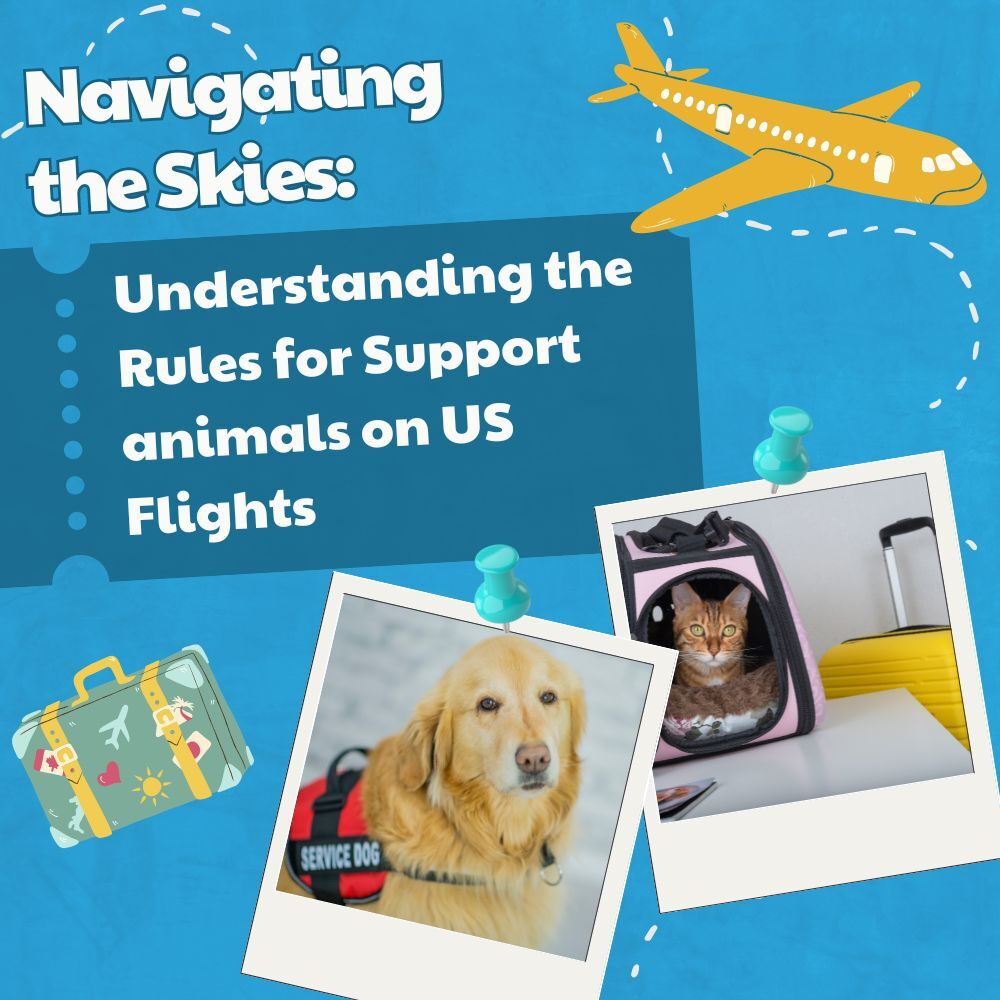
Navigating the Skies: Understanding the Rules for Support Animals on US Flights
Share
Flying can be a stressful experience for many people, but for those with disabilities or emotional support needs, the presence of a support animal can make all the difference. Whether it's a service dog providing vital assistance or an emotional support peacock offering comfort, the rules surrounding support animals on planes in the United States have been a topic of debate and regulation in recent years. Let's delve into the intricacies of bringing support animals on board and understand the guidelines passengers need to follow.
What Qualifies as a Support Animal?
First and foremost, it's essential to clarify what constitutes a support animal. In the context of air travel, support animals typically fall into two categories: service animals and emotional support animals (ESAs).
- **Service Animals**: These animals are specially trained to perform tasks for individuals with disabilities. Common examples include guide dogs for the visually impaired, hearing dogs for the deaf, and mobility assistance dogs for those with physical disabilities.
- **Emotional Support Animals (ESAs)**: Unlike service animals, ESAs are not trained to perform specific tasks. Instead, they provide comfort and emotional support to individuals with mental health conditions such as anxiety, depression, or PTSD. These animals can include dogs, cats, and sometimes other species, depending on the individual's needs.
- **Service Animals**: Under the DOT's rule, airlines are required to allow service dogs, regardless of breed, to accompany passengers with disabilities in the cabin free of charge. However, airlines may request documentation confirming that the animal is indeed a trained service dog.
- **Emotional Support Animals (ESAs)**: Unlike service animals, ESAs are not granted the same blanket accommodation. The DOT's rule allows airlines to treat ESAs as pets rather than service animals, meaning they may be subject to additional fees and requirements, such as health and vaccination certificates and behavioral guidelines.
- **Advance Notice and Documentation**: Airlines may require passengers traveling with ESAs to provide advance notice and documentation, including a letter from a licensed mental health professional certifying the passenger's need for an ESA. This documentation should be submitted well in advance of the flight to allow the airline to review and approve it.
- **Species Limitations**: While dogs are the most common type of service animal, ESAs can include a wider range of species. However, airlines may impose restrictions on the types of animals allowed in the cabin, considering factors such as size, weight, and potential disruption to other passengers.
- **Behavioral Standards**: Regardless of whether an animal is a service animal or an ESA, airlines have the right to refuse transportation if the animal displays aggressive behavior, poses a direct threat to the health or safety of others, or disrupts the flight operations.


